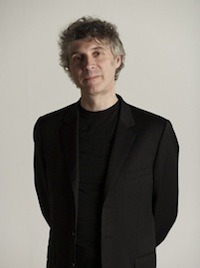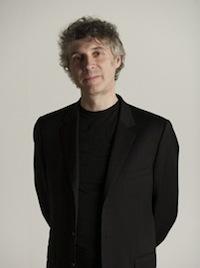
The widely known British concertmaster, chamber musician, and star of the BBC film Eroica Peter Hanson has staked his claim as the new leader of the Carmel Bach Festival. As with his predecessor, Elizabeth Wallfisch, Hanson took over Monday’s main concert at Sunset Center. The menu offered a miscellany of Baroque concertos by Vivaldi, Telemann, and Mudge; incidental music by Purcell; and symphonies by C.P.E. Bach, all using Baroque instruments. (The festival has scheduled a screening of Eroica for July 20.)
By offering gracious and witty remarks before launching into these and other works, Hanson made himself an accessible presence during the concert, yet he asserted his authority by stopping his players in midstride: once (in the Purcell) to restart a movement, and then (in the second of the two C.P.E. Bach works) to retune the band.
In more formal attire than they adopted at Sunday’s St. John Passion production, 10 string players, with lutenist Daniel Swenberg and harpsichordist Yuko Tanaka, joined Hanson to open the show with C.P.E. Bach’s zany Symphony in E Minor, Wq. 177. Switching fiddle-players around, Hanson then took up the Concerto Grosso in D Minor, with a concertino of two violins, by the Rev. Richard Mudge, a later-generation English follower of such ex-pat Londoners as Handel and Geminiani. This Italianate work sounded much like Handel, though without such distinctive fingerprints. The second of its four movements took the form of a fugue. Hanson’s partner was Cynthia Roberts. Here, and in the later Telemann, Swenberg played on a theorbo, which was plainly longer than the shortest of the string players on stage was tall.
The evening’s first half concluded with Vivaldi’s popular Concerto for Four Violins in B Minor, drawing Christina Zacharias and Patricia Ahern into the featured quartet. The propulsive reading sparkled but lacked the pugilistic punch it has when heard on the more tightly strung “modern” violins.
Regal Show
Six short bits from Purcell’s “semi-opera” King Arthur — bearing almost no connection to that king of legend — made the case, yet again, for Britain’s first great composer, as they wooed and seduced the audience with their ephemeral tunes and enchanting rhythms. The overture showed plainly its composer’s influence on Handel, who arrived in London 15 years after the older man’s early death. The final Grand Dance took the basso ostinato form of a chaconne, knocked off from the French practice of Lully.
As leader of the festival’s orchestra, and a participant in programs of chamber music, Hanson had his biggest solo moment of the festival in Telemann’s Violin Concerto in B-flat. The work was written for J. Georg Pisendel, the celebrated concertmaster of the Staatskapelle Dresden during its glory years of the early 18th century. In four movements — Telemann’s favorite concerto layout — the piece suggested a flattery of its dedicatee’s specific talents. (The third movement, andante, sweetly suggested the oboe writing of Albinoni.) Hanson cavorted gracefully through its virtuosic twists and turns. Again, a modern instrument would have delivered greater brilliance.
Another entertaining, if similarly incoherent, symphony by C.P.E. Bach neatly wrapped up the program.

